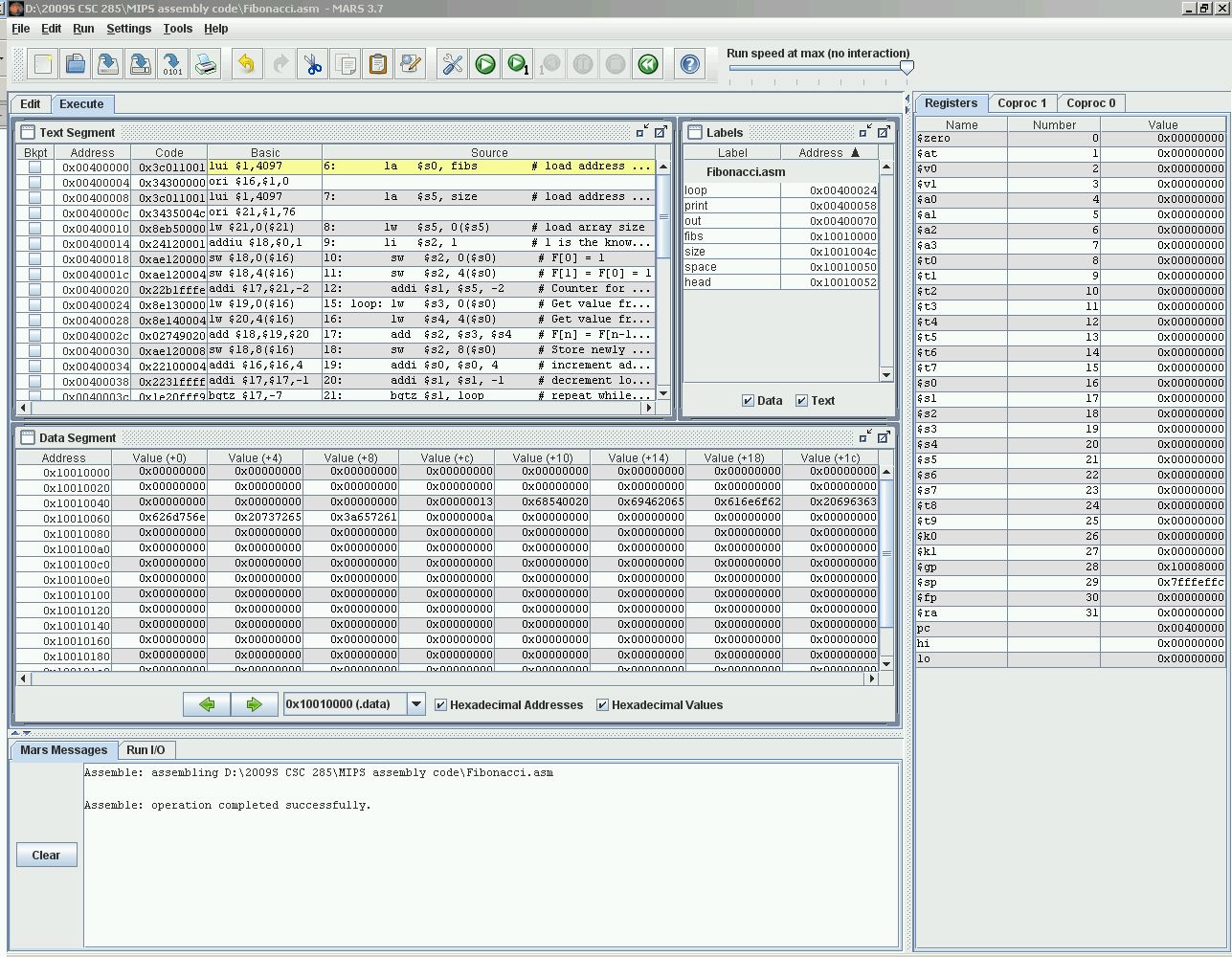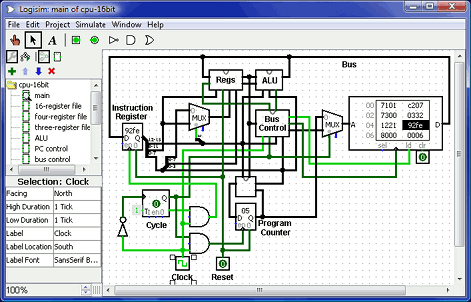|
On this page you will find information about the course "Computersystemen en -architectuur" (1001WETCAR) for the first semester of the 2012-2013 academic year at the University of Antwerp. This page is written in English for the benefit of foreign Erasmus students. This course consists of two interwoven parts:
To indicate which parts of the book correspond to the lectures, have a look at last year's overview of what to study for the exam (minor updates will be made shortly to reflect this year's small changes in the course). ExamsYour results of this course depend on the following:
Second Session
Theory
All lectures (in PDF format) can be found online (on Blackboard) as announced in class. Before each class,
the slides are last year's. By the end of the lecture, the slides are updated to reflect this year's changes.
byRefenceVSbyValue.c demonstrates the use of
call-by-value and call-by-reference in C.
Lab SessionsIn each lab session, you will be given some exercises (Computer Systems) and/or a project (Computer Architecture). All exercises are made individually, projects are solved in groups of two students. Exercises (CS)
After each lab session, a new "assignment" is enabled on Blackboard, with a strict deadline. You submit your solution of the exercises before the deadline (typically one week after the lab session). You submission must have these characteristics:
The exercises can be found here. Projects (CA)
In each lab session, you will work on a project in pairs of two students. Projects build on each other, to converge into a unified whole at the end of the semester. During the semester, you will be evaluated three times. At these evaluation moments, you will present your solution of the past projects by giving a demo and answering some questions. You will immediately receive feedback, which you can use to improve your solution for the following evaluations. For every project, you submit a small report of the project you made by filling in verslag.html completely. A report typically consists of a summary of everything you implemented and an explanation of the choices you made in the implementation. Again, put all your files in a tgz archive. The name of that archive consists of your last and first name, without spaces. If, for example, your name is Jan De Smedt, the file name of your archive must be DeSmedtJan.tgz. The projects can be found here. Files
The HTML forms you will need for the solutions (right click, save as): You have to adapt the HTML-code manually (i.e., in notepad) to fill in the forms. A good HTML tutorial can help you with this. Remark: in the forms, the <u> element for underlining is redefined to "overline". This way, you can express NOT in Boolean algebraic expressions: e.g., NOT A OR B becomes A+B. Unfortunately, double overline is not possible. Of course, you can always use the NOT A OR B notation. Tools
Throughout the course we will use the following tools: Both tools require java to run. The tools are installed on the lab computers. If you would like to run a UNIX distribution on your own computer, we suggest Ubuntu. You can install Ubuntu next to your Windows using the Windows installer. After installation, you will be able to choose on startup between Windows and Ubuntu. If you would like to run Ubuntu inside your Windows, you can install Ubuntu on VirtualBox by following these steps. In order to copy files in Windows from and to servers (e.g., between your laptop and the radix.ua.ac.be server) you can use WinSCP. You can simply use the scp command if you are using UNIX. Blackboard caveats
The burden of timely submission of your work on Blackboard is on you! (late submissions are not accepted)
Planning
Computer SystemsProgram of the lab sessions
Introduction to UnixIntroduction session on Unix commands. The use of Unix Shell Commands is explained. Material: Regular Expressions and SedIntroduction and exercises on regular expressions and sed. Material: MIPS: Stacks and subroutinesExercises on MIPS Stacks and subroutines Material: Computer ArchitectureProgram of the lab sessions
AddersBuild an 12-bit adder (ripple carry adder and carry lookahead adder). Material: FSMBuild a register file, counter, clock divider and finite State Machine for a traffic light. Material: Datapath (1)Build a program counter and a datapath. Material: Datapath (2)Add branch, jump and immediate instructions to the instruction set. Material:
|
| Maintained by Hans Vangheluwe. | Last Modified: 2013/09/03 12:55:53. |

